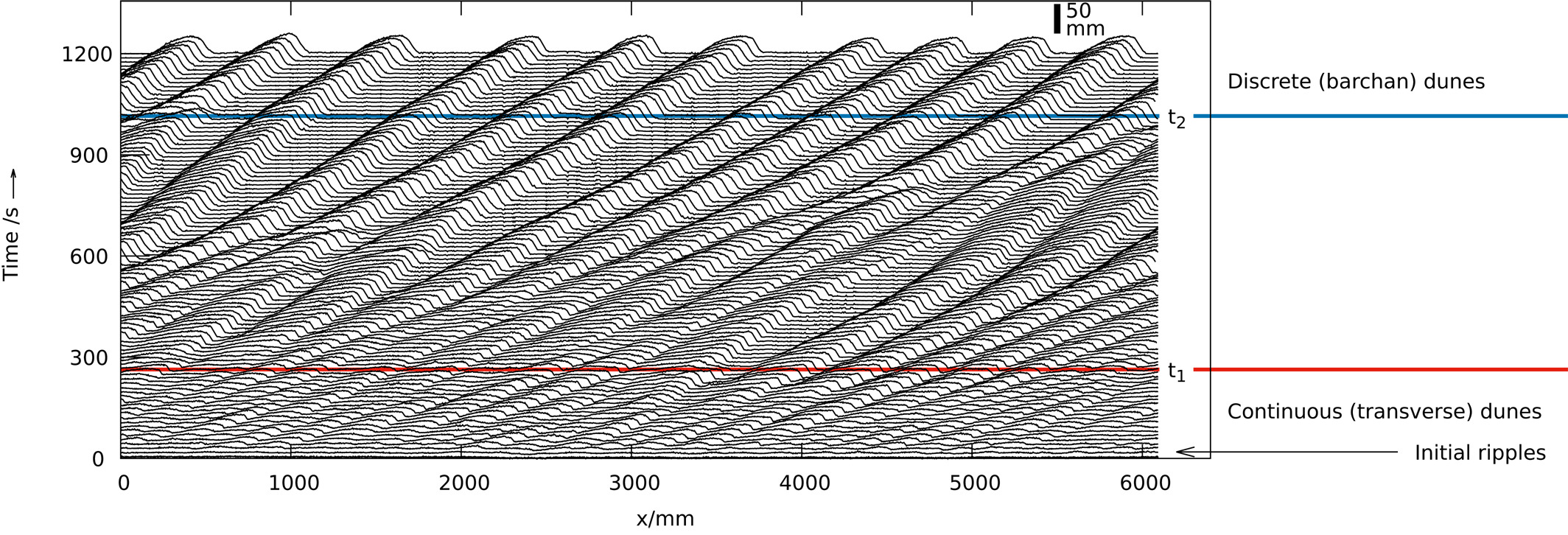P. A. Jarvis, K. A. Bacik, C. Narteau, N. M. Vriend
Journal of Fluid Mechanics
If the flow of water over a flat bed of sand is sufficiently fast, then grains of sand can be picked up, transported and deposited to form sand dunes. Initially, many small dunes form but, as the flow continues, they grow and merge to become a smaller number of larger dunes. We have performed experiments investigating the formation and growth of underwater dunes from an initially flat bed of sediment. In particular, we vary the speed of the flow, the depth of the water and the thickness of the sediment bed. We observe that the dunes initially grow rapidly, before reaching an almost-constant height that increases with the sediment thickness. In order to relate the initial dune growth rate to the driving flow, we have also performed numerical simulations of the water flow in the experiment. This enables us to better constrain the shear stress on the sediment bed, which is quantified through the friction velocity u∗. By combining the experimental and numerical results, we show that the initial dune growth rate is approximately proportional to u∗5. These results can form a starting point for models describing the growth of underwater dunes.

